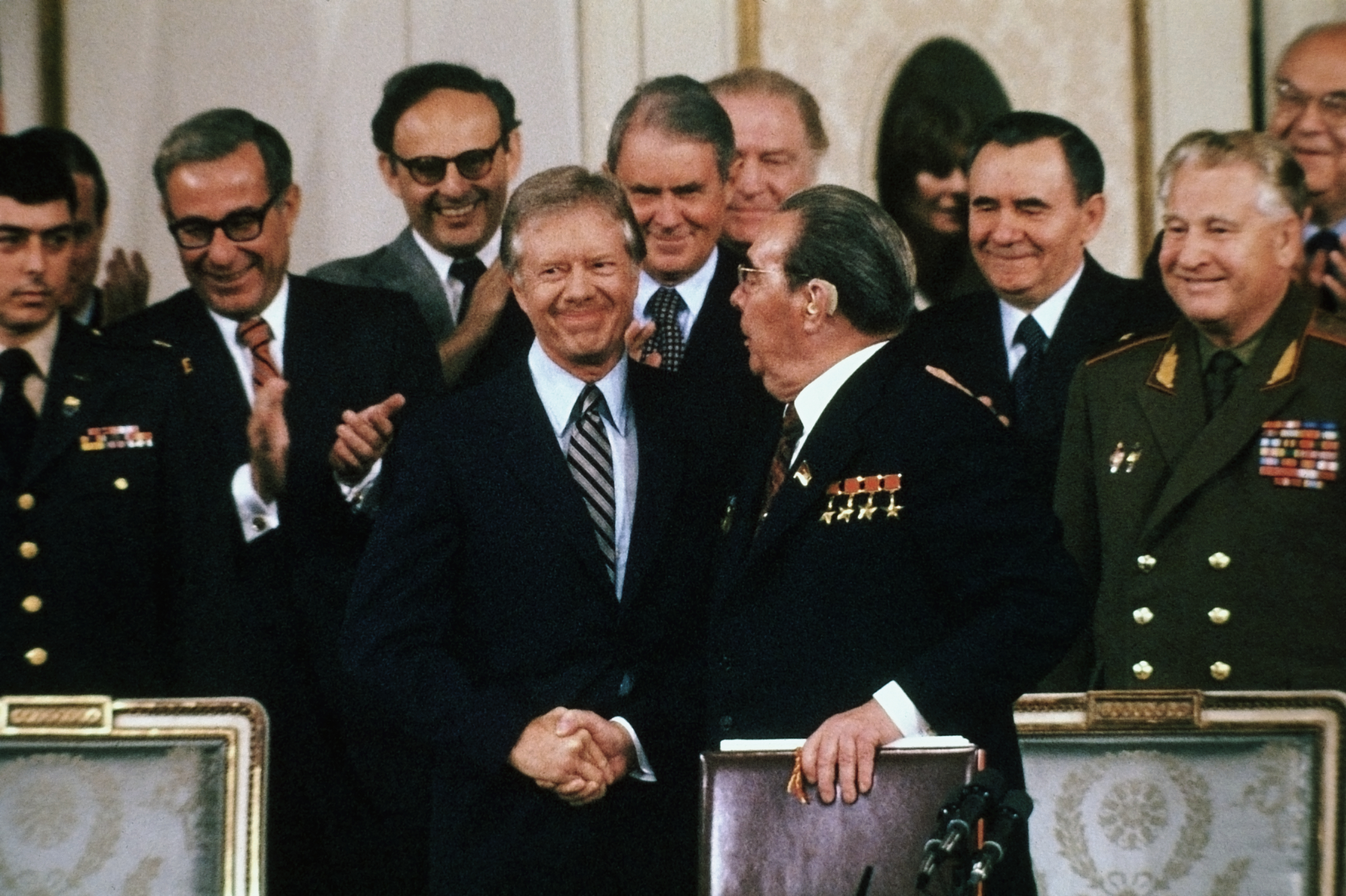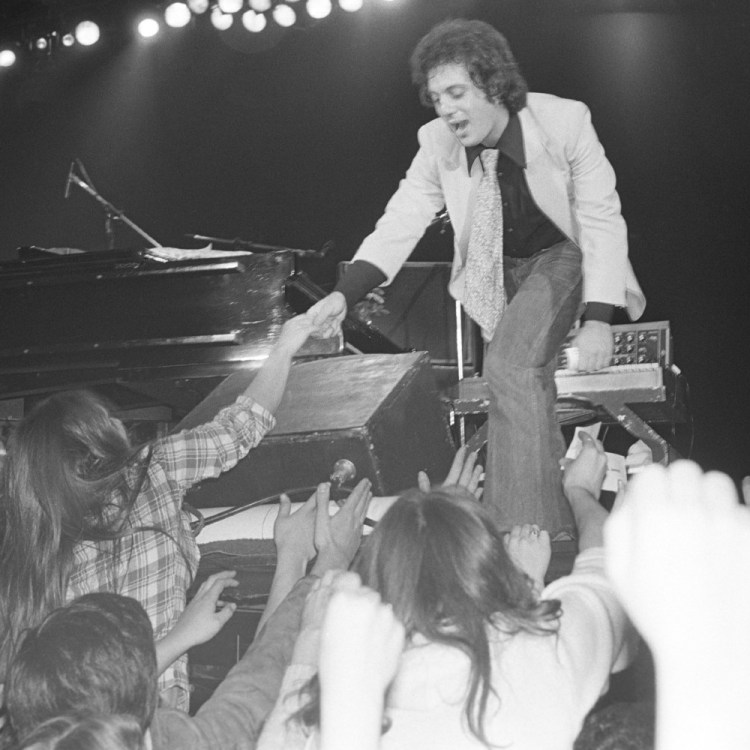On Friday, Willie Nelson celebrated two milestones — the release of A Beautiful Time, his 72nd solo studio album and 97th album overall, and his 89th birthday. Both are, of course, huge accomplishments; how many other legendary artists do you know who are still putting out engaging new material — or any new material, for that matter — while they’re pushing 90? How many others can say they did so at such an impressive clip? (Nelson has averaged 1.6 new LPs a year over the past 60 years.)
We’re all familiar with massive hits like “On the Road Again” and “Always On My Mind” or the beloved outlaw-pothead persona that turned him into an icon. But delving deeper into his catalog can be a daunting task for Nelson novices. Given that the guy’s made close to 100 records, one would be forgiven for not knowing where to start.
That’s where we come in. We’ve rounded up some of the country singer’s most essential releases — in chronological order, from the early stuff that should have made him a superstar to the shockingly enjoyable late-period efforts that have no business being as great as they are — below.
…And Then I Wrote (1962)
Essential tracks: “Crazy,” “Funny How Time Slips Away,” “Touch Me”
Before Nelson released his debut album in 1962, he had already established himself as a songwriter to be reckoned with by penning massive hits for other artists — including “Hello Walls” for Faron Young, “Funny How Time Slips Away” for Billy Walker, “Night Life” for Ray Price and, most famously, “Crazy” for Patsy Cline. …And Then I Wrote sees him stepping into the spotlight on his own and proving that his distinct vocals are just as worthy of his material as anyone else’s. He delivers his own renditions of his songs that other singers found success with, but he also fleshes out the record with fresh material that wound up cementing his status as a country star in his own right. “Touch Me,” which peaked at No. 7 on Billboard’s Hot Country chart, gave Nelson his first solo chart success — though, inexplicably, it would remain his only Top 10 hit until 1975’s “Blue Eyes Crying in the Rain.”
The Words Don’t Fit the Picture (1972)
Essential tracks: “Good Hearted Woman,” “Will You Remember?”
The Words Don’t Fit the Picture is significant in that it captures an important transitional moment in Nelson’s career. Just like how Columbia Records famously made the grave mistake of trying to get Aretha Franklin to sing soulless pop songs, RCA never quite knew what to do with Willie Nelson. By 1972, he had made 14 albums with the label trying to adhere to Chet Atkins’ “Nashville Sound,” but he didn’t have much to show for it. (In retrospect, it seems like a no-brainer that a rough-around-the-edges Texan like Nelson shouldn’t be making smooth country-pop.) The Words Don’t Fit the Picture is his penultimate record with RCA, and in it you can hear some of the seeds of that star quality that would eventually launch him into the stratosphere the following year with Shotgun Willie. The record features Nelson’s first solo recording of “Good Hearted Woman,” which he cowrote with Waylon Jennings — laying the groundwork for their 1978 collaborative album Waylon & Willie.
Shotgun Willie (1973)
Essential tracks: “Shotgun Willie,” “Whiskey River,” “Sad Songs and Waltzes”
After leaving RCA, Nelson became the first country artist to sign with Jerry Wexler’s Atlantic Records, where he was given more creative control. He grew out his hair, chose his own band, incorporated some R&B influences and just generally allowed himself to be a little grittier. (The title track, for example, was inspired by an incident where Nelson, having just found out that his daughter Lana was being abused by her husband, went after his then-son-in-law with a shotgun.) The result is one of the earliest touchstones of the “outlaw country” subgenre, full of classics like “Whiskey River” and meta commentary on his experiences in the industry prior to signing with Atlantic. On “Sad Songs and Waltzes,” he presents us with the absolutely devastating image of a heartbroken narrator who knows his tales of misery will never actually be heard because they’re not commercially viable: “It’s a good thing that I’m not a star/You don’t know how lucky you are/Though my record may say it, no one will play it/Cause sad songs and waltzes aren’t selling this year,” he sings.
Phases and Stages (1974)
Essential tracks: “Bloody Mary Morning,” “Walkin’,” “It’s Not Supposed to Be That Way,” “Sister’s Coming Home/Down at the Corner Beer Joint”
Phases and Stages is a concept album with a unique twist: the record chronicles a divorce from dueling perspectives, with side one told through the long-suffering wife’s point of view and side two told through the eyes of her no-good, philandering husband. It was groundbreaking for a number of reasons; for one, it was one of the first notable concept albums in country music, challenging the way stories could be told within the genre. But it’s also a surprisingly feminist effort, with a male country singer writing in the voice of a sympathetic female character — something that was certainly a rarity back in 1974. Sonically speaking, it’s some of Nelson’s finest material, recorded over two days at Muscle Shoals Sound Studios with the legendary Swampers as his backing band. Unfortunately, it wasn’t enough to impress the brass at Atlantic Records, and they shuttered their country music division in the wake of its release — bringing Nelson’s time at the label to a close and prompting Jerry Wexler to resign from Atlantic over the decision.
Red Headed Stranger (1975)
Essential tracks: “Blue Eyes Crying in the Rain,” “Can I Sleep in Your Arms,” “Time of the Preacher”
After parting ways with Atlantic on the heels of one excellent concept album, Nelson signed with Columbia Records that gave him complete creative control over his records. Naturally, the first thing he did with that power was put out an even better concept album. Red Headed Stranger is centered around a man who kills his wife and her lover after learning of their affair; while on the run, he kills another woman who dared to reach out and touch the horse that had belonged to his wife but gets off after the court finds that “you can’t hang a man for killin’ a woman who’s tryin’ to steal your horse.” Unlike so many other country murder ballads, however, where the protagonist reaps what he sows in the form of jail time or eternal damnation, Red Headed Stranger imagines a world where redemption is possible. Side two of the record sees the Stranger falling in love again, this time with a woman he meets in a bar. It features some of Nelson’s best work — you won’t hear a lovelier ballad than the sparse, vulnerable “Can I Sleep in Your Arms” — and eventually, it ends with the peaceful “Hands on the Wheel,” which sees the character as an old man, with his true love and their grandchild at his side.
Waylon & Willie (with Waylon Jennings) (1978)
Essential tracks: “Mammas, Don’t Let Your Babies Grow Up to Be Cowboys,” “Don’t Cuss the Fiddle,” “Pick Up the Tempo”
Waylon Jennings and Willie Nelson had a long history of collaborating, so it makes sense that after years of writing together and touring together, they’d eventually make a full-length album together. The first of several high-profile duets records for Nelson, Waylon & Willie sees the two titular outlaw country titans joining forces on 11 tracks — five duets, along with three solo songs each. The record’s crown jewel, of course, is “Mammas, Don’t Let Your Babies Grow Up to Be Cowboys,” which spent four weeks atop the country music charts and earned the pair the Grammy Award for Best Country Performance by a Duo or Group. But aside from that classic, there’s plenty more to sink your teeth into on Waylon & Willie, like their cover of Fleetwood Mac’s “Gold Dust Woman,” Jennings’ excellent “The Wurlitzer Prize (I Don’t Want to Get Over You)” and the duo’s take on Kris Kristofferson’s “Don’t Cuss the Fiddle.”
Stardust (1978)
Essential tracks: “Georgia on My Mind,” “Blue Skies,” “All of Me”
How do you follow up one of the most beloved country albums — outlaw or otherwise — of all time? If you’re Willie Nelson, you do a complete 180 and put out a record consisting entirely of pop standards just months later. Stardust is a stunning display of versatility. (Nelson could kill with “Someone to Watch Over Me,” but Sinatra would never be able to pull off something like “Roll Me Up and Smoke Me When I Die.”) Nelson is tremendously skilled at interpreting other people’s songs, putting his own spin on them while staying true to their original spirit, and his renditions of “Georgia on My Mind,” “Blue Skies” and “All of Me” are all must-listens. And don’t just take our word for it: Stardust spent a whopping 10 years on Billboard’s Country Album charts, and by 1988 it was certified quadruple-platinum. It also earned Nelson another Grammy, this time for Best Country Male Vocal Performance for his take on “Georgia on My Mind.”
Pancho & Lefty (with Merle Haggard) (1983)
Essential tracks: “Pancho and Lefty,” “Reasons to Quit,” “Half a Man”
Pancho & Lefty is the first of six collaborative albums by Willie Nelson and Merle Haggard, and all it takes is one listen to hear why their creative partnership would go on to be so fruitful. The title track, a ballad about a Mexican bandit and the friend who betrays him written by Townes Van Zandt, is the one that would go on to be a No. 1 hit, but front to back, Pancho & Lefty is full of masterful tracks. Nelson and Haggard’s voices blend together beautifully — especially on the devastating, Haggard-penned tale of addiction “Reasons to Quit” — and they manage to elevate each other beyond the sum of their parts.
Spirit (1996)
Essential tracks: “She Is Gone,” “Too Sick to Pray”
There aren’t too many other artists who would make a huge creative left-turn on their 44th studio album, but Nelson did just that with the criminally underrated Spirit. Released in 1996, it was his most sparse effort to date — relying on just two guitars, Johnny Gimble’s fiddle and piano played by his sister, Bobbie Nelson — and it sports heavy Mexican/Tejano and classical influences. The arrangements give Nelson’s vocals room to breathe, and he shines on tracks like “She Is Gone,” “Your Memory Won’t Die in My Grave” and “Too Sick to Pray.”
Teatro (1998)
Essential tracks: “Darkness on the Face of the Earth,” “I Never Cared For You,” “Somebody Pick Up My Pieces”
After Spirit, Nelson headed out to an old movie theater in Oxnard, California to team up with Daniel Lanois and Emmylou Harris for Teatro and an accompanying documentary. The record, produced by Lanois (who had also famously produced Harris’ 1995 classic Wrecking Ball), sees Nelson revisiting and reimagining some of his early material from the 1960s with Harris on backing vocals, transforming them into atmospheric, electric guitar-driven tracks that should help any rock snob who insists they’re into “anything but country” finally see the error of their ways.
God’s Problem Child (2017)
Essential tracks: “Still Not Dead,” “He Won’t Ever Be Gone”
When you’re in your 80s, death is naturally something you start thinking about, and on God’s Problem Child — his 61st solo album, released when he was 84 — Nelson confronts mortality with both humor and pathos. On “Still Not Dead,” he confronts internet rumors of his demise: “I woke up still not dead again today / The news said I was gone to my dismay / Don’t bury me, I’ve got a show to play,” he sings. But on the moving “Old Timer,” he addresses those in his age group with brutal honesty like “One by one, your friends have crossed over/You pray for mercy and a few more days/Still got dreams inside your head/Some days it’s a struggle just to get out of bed,” and on “He Won’t Ever Be Gone,” he offers a touching tribute to his longtime friend and collaborator Merle Haggard, who died in 2016.
This article appeared in an InsideHook newsletter. Sign up for free to get more on travel, wellness, style, drinking, and culture.
























